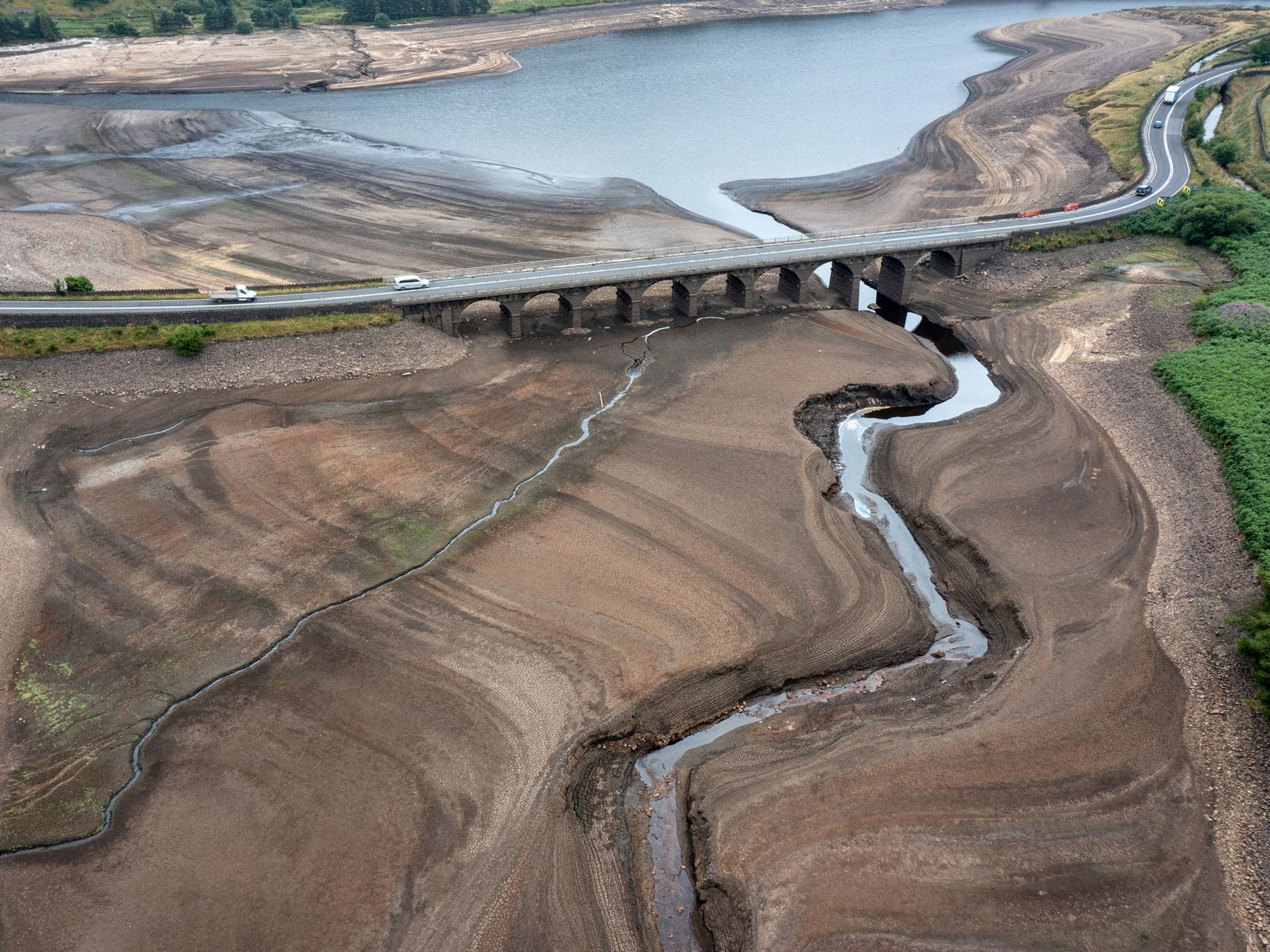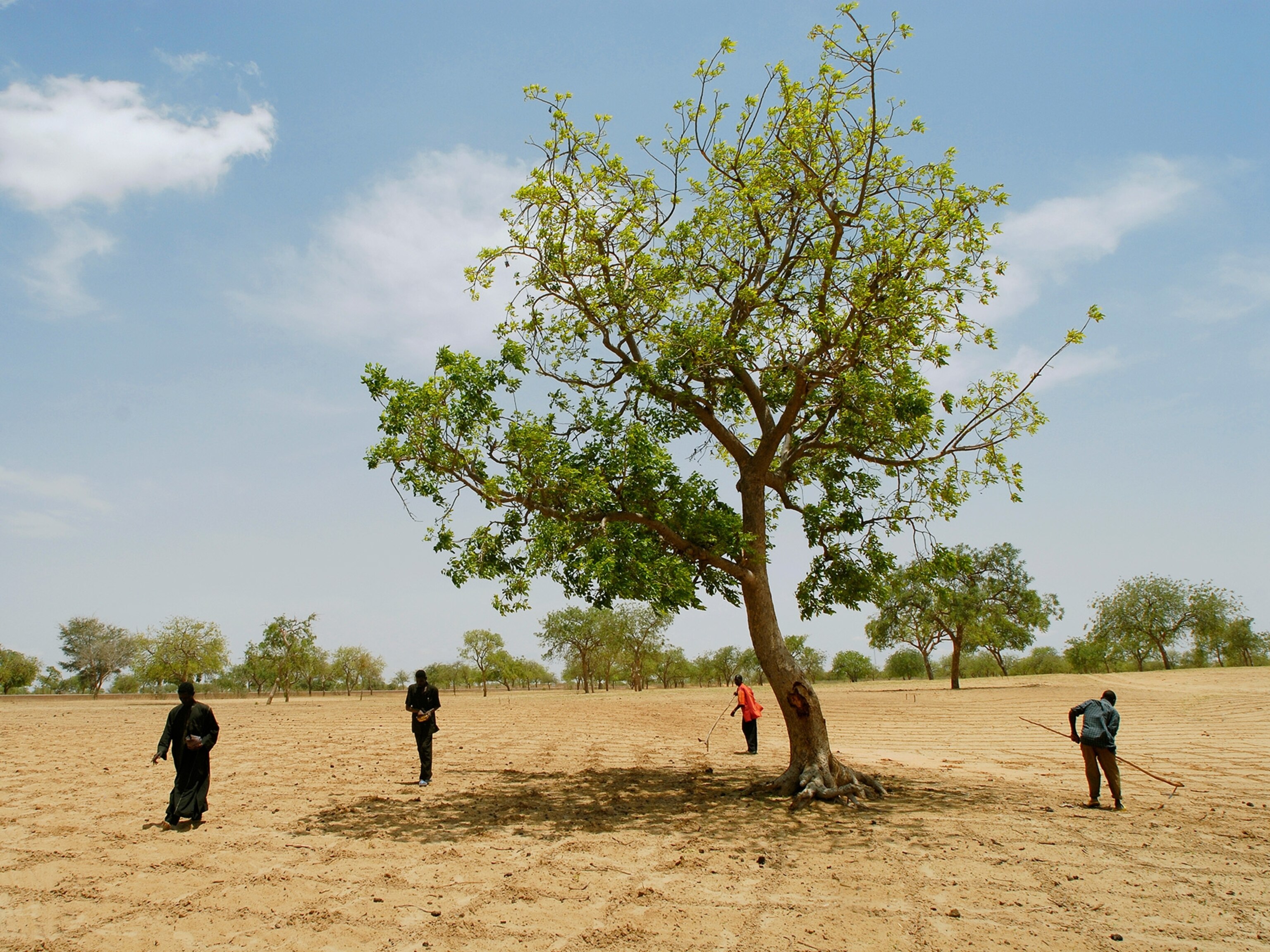
Sustainable Earth: Water
Rio+20 highlights the global effort needed to safeguard one of the world's most important resources.
Clean water is essential for life, but most people in the developed world don't think much about the water they use for drinking, food preparation, and sanitation. In developing nations, however, the search for safe drinking water can be a daily crisis. Millions of people die each year, most of them children, from largely preventable diseases caused by a lack of access to clean water and proper sanitation.
Sandra Postel, director of the Global Water Policy Project and the National Geographic Society's freshwater fellow, said freshwater scarcity presents a growing problem to be addressed during the United Nations Conference on Sustainable Development (Rio+20) in Brazil from June 20 to 22. "It manifests itself in the depletion of groundwater, and the drying up of rivers and lakes upon which people depend for irrigation to grow their food," she said. "The intersection of water scarcity, food security, and a changing climate on top of it all raises a suite of water concerns that urgently need to be addressed."
Much progress is possible. In fact, due to the dedicated efforts of governments and NGOs since the 1992 Earth Summit, safe drinking water has been made available to some 1.7 billion people around the world, with projects ranging from modern piped plumbing to rainwater collection and storage.
But an estimated 880 million people still don't have regular access to clean water. "And we haven't made nearly as much progress on sanitation," Postel said. "Something like 2.7 billion people are without adequate sanitation, so that challenge still looms very large." Policymakers will struggle to lower both numbers even as the planet's population rises by an expected three billion over the next 50 to 75 years.
Serious Challenges
About 5,000 children die each day due to preventable diarrheal diseases such as cholera and dysentery, which spread when people use contaminated water for drinking or cooking. A lack of water for personal hygiene leads to the spread of totally preventable ailments like trachoma, which has blinded some six million people.
Water woes also trap many low-income families in a cycle of poverty and poor education—and the poorest suffer most from lack of access to water. People who spend much of their time in ill health, caring for sick children, or laboriously collecting water at distances averaging 3.75 miles (6 kilometers) a day are denied educational and economic opportunities to better their lives.
Competition can be fierce for this precious commodity. Agriculture claims the lion's share of freshwater worldwide, soaking up some 70 percent, and industrial uses consume another 22 percent. Watersheds and aquifers don't respect political borders and nations don't always work together to share common resources—so water can be a frequent source of international conflict as well.
Day-by-day demand keeps growing, further draining water sources, from great rivers to underground aquifers. "We're going deeper into debt on our groundwater use," Postel said, "and that has very significant impacts for global water security. The rate of groundwater depletion has doubled since 1960."
Some of Earth's groundwater is fossil water, created when Earth's climate was far different. Today such water is as finite as petroleum. Other aquifers are renewable. "But we're pumping many of them out faster than precipitation is recharging them," Postel explained. "This is the case underneath the breadbasket of India, underneath the wheat and cornfields on the plains of north China, under California's Central Valley. We need to bring withdrawals into balance with recharge."
Humanity's growing thirst also poses a major problem for aquatic ecosystems. "When we take water from rivers, floodplains, and watersheds, those ecosystems bear the brunt of water scarcity and begin to be degraded or disappear," she said. "And that also creates a cost to us, not just to nature, because we also depend upon those ecosystems."
The Path to Solutions
The silver lining, Postel noted, is that many opportunities exist to use the water we do have more productively. Change begins with more efficient management of water resources.
"Seventy percent of all the water we use globally is for agriculture, so that's where we first have to become a lot more efficient through methods like drip irrigation and growing crops that are more suitable to the local climate," Postel said. "We still have too few incentives for farmers to use water more efficiently. Farmers are good businesspeople; they respond to incentives that affect their bottom line."
The United National General Assembly has recognized "the right to safe and clean drinking water and sanitation as a human right that is essential for the full enjoyment of life and all human rights." Making that right become a universal reality, and providing each person on the planet with affordable access to the 20 to 50 liters of daily water required to sustain life, is a clear goal for the decades ahead.
Related Topics
You May Also Like
Go Further
Animals
- This ‘saber-toothed’ salmon wasn’t quite what we thoughtThis ‘saber-toothed’ salmon wasn’t quite what we thought
- Why this rhino-zebra friendship makes perfect senseWhy this rhino-zebra friendship makes perfect sense
- When did bioluminescence evolve? It’s older than we thought.When did bioluminescence evolve? It’s older than we thought.
- Soy, skim … spider. Are any of these technically milk?Soy, skim … spider. Are any of these technically milk?
- This pristine piece of the Amazon shows nature’s resilienceThis pristine piece of the Amazon shows nature’s resilience
Environment
- This pristine piece of the Amazon shows nature’s resilienceThis pristine piece of the Amazon shows nature’s resilience
- Listen to 30 years of climate change transformed into haunting musicListen to 30 years of climate change transformed into haunting music
- This ancient society tried to stop El Niño—with child sacrificeThis ancient society tried to stop El Niño—with child sacrifice
- U.S. plans to clean its drinking water. What does that mean?U.S. plans to clean its drinking water. What does that mean?
History & Culture
- Séances at the White House? Why these first ladies turned to the occultSéances at the White House? Why these first ladies turned to the occult
- Gambling is everywhere now. When is that a problem?Gambling is everywhere now. When is that a problem?
- Beauty is pain—at least it was in 17th-century SpainBeauty is pain—at least it was in 17th-century Spain
- The real spies who inspired ‘The Ministry of Ungentlemanly Warfare’The real spies who inspired ‘The Ministry of Ungentlemanly Warfare’
- Heard of Zoroastrianism? The religion still has fervent followersHeard of Zoroastrianism? The religion still has fervent followers
Science
- Here's how astronomers found one of the rarest phenomenons in spaceHere's how astronomers found one of the rarest phenomenons in space
- Not an extrovert or introvert? There’s a word for that.Not an extrovert or introvert? There’s a word for that.
- NASA has a plan to clean up space junk—but is going green enough?NASA has a plan to clean up space junk—but is going green enough?
- Soy, skim … spider. Are any of these technically milk?Soy, skim … spider. Are any of these technically milk?
- Can aspirin help protect against colorectal cancers?Can aspirin help protect against colorectal cancers?
Travel
- What it's like to hike the Camino del Mayab in MexicoWhat it's like to hike the Camino del Mayab in Mexico
- Follow in the footsteps of Robin Hood in Sherwood ForestFollow in the footsteps of Robin Hood in Sherwood Forest
- This chef is taking Indian cuisine in a bold new directionThis chef is taking Indian cuisine in a bold new direction
- On the path of Latin America's greatest wildlife migrationOn the path of Latin America's greatest wildlife migration




